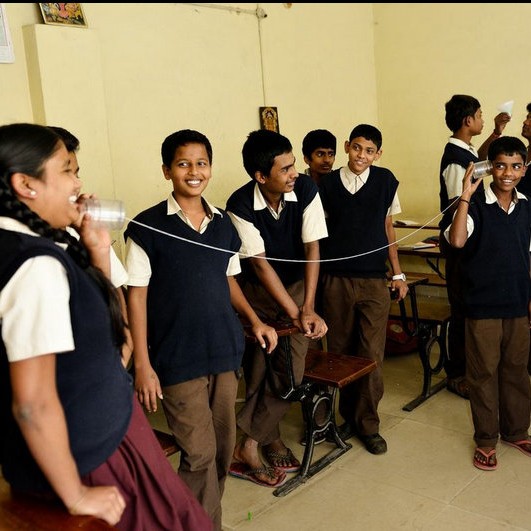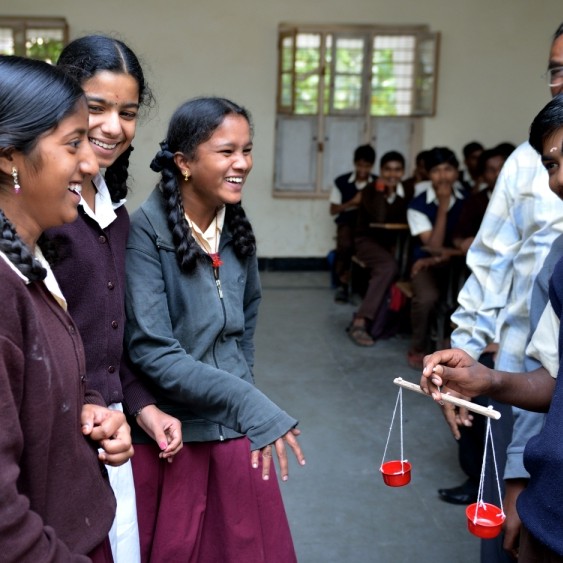Why Hands-On?
Science and Math are crucial for any walk of life. So educating children on basic concepts is very essential. This can be done as part of their curriculum.
We considered e-learning. No matter how good the video is, it is still NOT REAL. Seeing it “live” and experiencing is completely on a different level. We want children to get their hands on the experiments. This would increase their understanding significantly, compared to watching someone else do them on a monitor. If you are playing with the concepts in real-time, you are more involved.
We also realized infrastructure costs would be really high with e-learning. Nearly 18 hrs of power cuts in most of the villages is not helping the process. Also with the dust and power surges/cuts etc., the equipment is more prone to breakdown. This prompted us to find a simpler solution.
What can be simpler than giving a box of very simple experiments to the schools, where teachers can use them to teach children and students can practice whenever they want? The experiments are not dependent on a regular power supply or fancy equipment.


Simplicity
“If we cannot keep the explanation simple, then it means we didn’t understand the concept ourselves in the first place”- Einstein.
Children have short attention span. So we decided that our experiments should explain the concepts in one or two minutes.
Another key factor was simplicity in the material we used. Experiments should not look like they came out of a museum. We found that the children are more apprehensive to play with these “fancy experiments”. We wanted the experiments to be simple so that children are not afraid to break them. If they do, they should be able to figure out a way to fix them. This will give them accountability and builds their confidence as well.
Relevance to daily life
We try to make our experiments relevant to daily life to easily remember the concepts. For example, Ratio is taught using magnetic cards with pictures of roses, daisies, marigolds by asking them to make a garland with ratio 3:1:2. When they see flowers, they can remember ratios.
We use flash cards to teach food concepts. What is rice sweet made of? They pick the ingredients. Then they need to match the ingredient with the type of food – is it a dairy product or protein etc.
This hand’s on approach makes it fun and easy to remember. We have received feedback that children are not finding it necessary to refer to their textbooks when they are presented with similar problems as they remember the concepts well.
We found our experiments are also increasing the motivation in teachers.
Who wouldn’t be, when you see children excited and interested, you will obviously be motivated to teach them.

